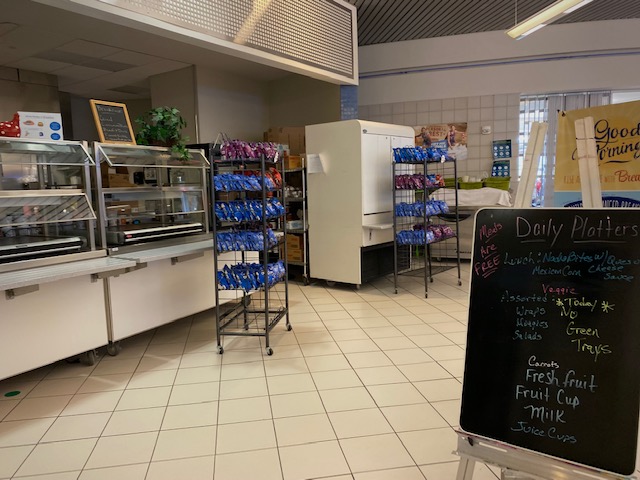What Goes Into Providing School Meals?
A Better Understanding of Promoting Healthy Food Habits
School lunch is back at Pennridge! This year, lunch has made its return back into the daily schedule. The classic meal and fruit combination is announced on The Daily Ramble so that students know what to expect each day, but there is a lot that goes into school lunches that kids may forget about.
Maintaining healthy school food options in schools is a national priority, and plenty of legislation has been passed in order to uphold a solid nutritional standard. The USDA has a core child nutrition program, attempting to incorporate multiple components of a balanced meal into available options for students. This is seen within the food environment at Pennridge High School within the requirements of getting a complete meal. This consists of the entrée along with a fruit item, and milk is also always available. Promoting healthy food standards from a legal perspective has had its own positive effects. For example, a recent Harvard study has concluded that, under the updated standards, kids are now eating 16 percent more vegetables and 23 percent more fruit at lunch. This is thought to be a result of the initiative set by educational and legal authorities in order to promote positive health standards. Similarly, using models like the MyPlate example helps to educate youth on balanced diet skills, which ultimately supports more healthy lifestyle choices.
Making food options available to all students is also an important factor that contributes to the atmosphere of our kitchen cafeterias. This year breakfast and lunch meals provided at Pennridge are free to all students, regardless of need. This can be part of an incentive for students to utilize the food resources provided, and also helps to increase the number of meals being given to students. Parents, teachers, administration, and even the students themselves are able to contribute to reviewing the overall wellness at the school on a quarterly basis, to make sure their efforts in supporting health are sufficient. Talyor Burkett, a freshman at Pennridge, says that she gets the school lunch about three times a week. She says that she appreciates the free meal policy, because “if it’s bad it doesn’t matter because you didn’t spend your money on it”. Kids are more willing to try the meals provided at the schools due to their availability being free. Overall, this also encourages students to take more consideration into the meals they are eating and learn more about healthy food standards, which supports some of the main goals of the current policies in place.
In all, the behind-the-scenes of school lunch is much more thorough and complex than the news heard on The Daily Ramble. The provisions surrounding healthy meal habits are ones that have proven beneficial on a national scale and are considered by Pennridge in-depth to ensure that the students are provided with healthy meal habits. Initiative taken by legislative bodies and by school authorities has many positive implications for students, all to support the importance of good health and nutrition!
Leah Malone, Grade 12. Interests/hobbies include soccer, photography, shopping, and spending time with her loved ones. Leah plans to attend High Point...


